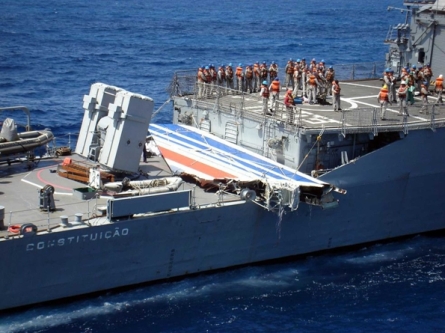France's air accident investigator BEA - and Airbus - have shown remarkable determination to find and recover the wreckage from Air France 447. The job is not yet finished, but 22 months after the aircraft went missing, the salvage team has located the seabed wreckage field, and the investigators can try to address unanswered questions.
The technical and operational questions that need answers are all related to what happened between the time the ice-affected pitot tubes provided differing airspeed information causing the autopilot to disengage, and the time the aircraft hit the sea surface.
Did the pilots face a technical problem beyond the disparate airspeeds, or will the investigators be looking at a human disorientation sequence triggered by the airspeed confusion? If information is recoverable from the flight recorders, or from avionics with non-volatile memory, these answers will be forthcoming. If not, the world will never know for sure why the aircraft crashed.
Other, intensely human issues face the recovery team. Four kilometres beneath the ocean surface, in almost freezing, de-oxygenated water and total darkness, the bodies of passengers and crew that are still with the wreckage will be relatively well preserved. There will be relatives who want them back, and those who prefer the ocean as the resting place. Or must these bodies be considered essential evidence both for the inquiry and at an inquest? Almost certainly.
 |
|---|
©Rex FeaturesNearly two years on, urgent questions persist |
Only one thing is absolutely certain. AF447 has demonstrated, more dramatically than any previous crash, the shortcomings of recorders that go down with the aircraft. The weaknesses have been debated for years and numerous solutions proposed, but the authorities have shown no interest in alternatives. When the AF447 recorders are found, if they yield little or nothing the case for alternatives will be that much more emphatic. Even if they contain data, the case for replacing or supplementing them is undeniable.
The determination of the BEA and Airbus to find the aircraft reflects a reality: that the airline, the manufacturer, and travellers everywhere have a right to know why more than 200 lives were lost.
But for 22 months the commercial air transport world has been proceeding in ignorance of what caused this accident and how to prevent another like it. This is an unacceptable situation, and leading world authorities like the European Aviation Safety Agency and the US Federal Aviation Administration have a duty to correct it.
Source: Flight International


























